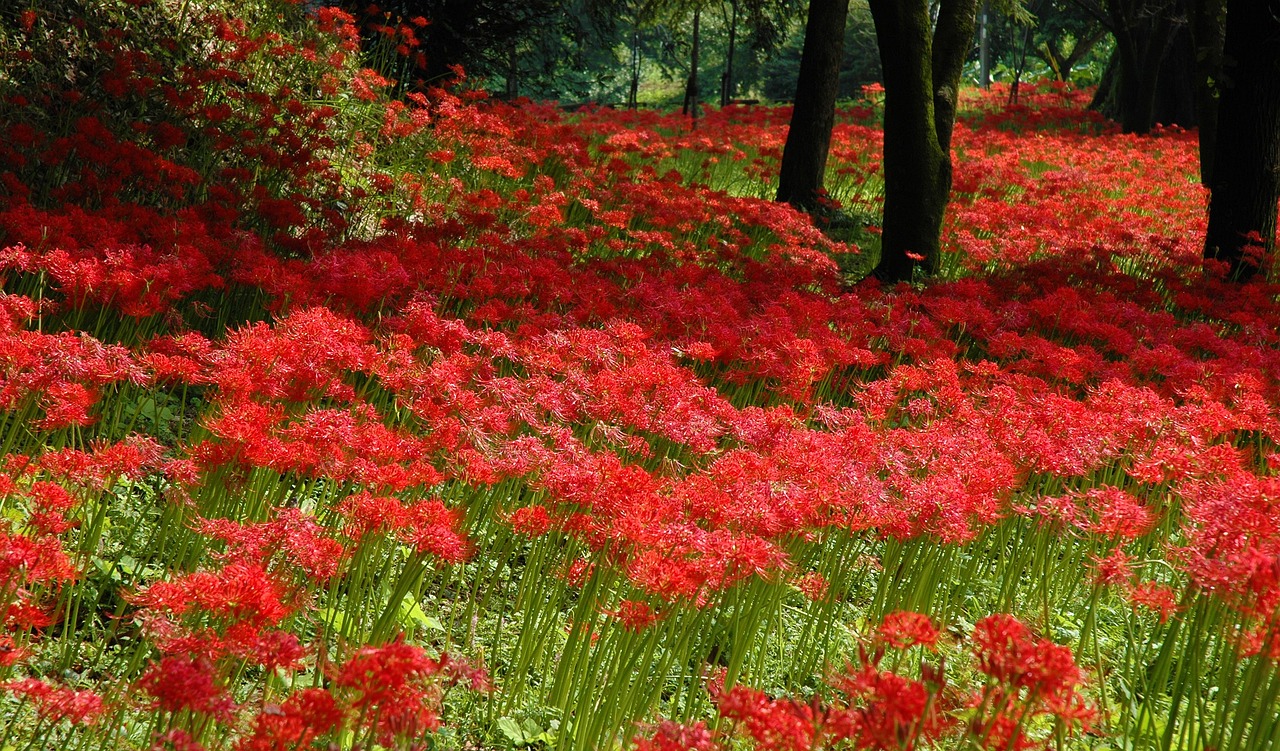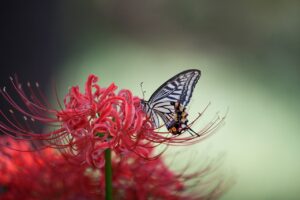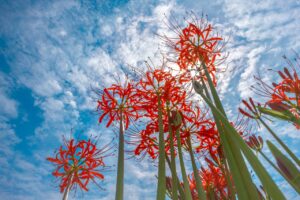Spider Lily
Overview
The Spider Lily, known for its distinctive, spider-like blooms, graces gardens across tropical and subtropical regions. These ornamental plants excel in moist, well-drained soil, basking in full sun to partial shade. Blossoming in summer and fall, they offer fragrant white flowers that charm onlookers.

Characteristics
Known for its striking, fragrant blooms with spider-like petals and long stamens, thriving in moist, subtropical climates.
Region
Tropical and subtropical areas worldwide, including swamps and moist woods in the Mississippi lowlands of Missouri.
Natural Habitat
Typically found along the sides of streams and lakes in swamps and moist woods.
Cultivation
Prefers full sun to partial shade, requires moist, well-drained soil.
Uses and Benefits
Spider Lilies, or Hymenocallis, are primarily celebrated for their stunning flowers that can transform any garden space. Here are the uses and benefits of this unique herb:
- Their delicate, spider-like blossoms offer an ornamental quality that’s both captivating and exotic4.
- Fragrant and vibrant, they add sensory appeal to gardens, which can elevate the enjoyment of your outdoor space4.
- As perennials, they ensure longevity in the garden, returning year after year to provide consistent beauty3.
- Spider Lilies can also be used in cut flower arrangements, with their long-lasting blooms and striking appearance4.
These flowers don’t only serve aesthetic purposes but can also contribute to a tranquil and fragrant atmosphere, ideal for nature-conscious individuals looking to enhance their garden’s natural charm.

Cultivation Tips
To cultivate Spider Lilies and enjoy their stunning blooms, consider the following tips:
- Choose a location with access to full sun or partial shade. This ensures the plants receive sufficient light without being scorched midday.3
- Plant the bulbs in moist, well-drained soil to promote healthy growth and prevent rot.3
- Give the plants plenty of space. Spider Lilies should be planted so that their basal clump of leaves can spread out without crowding.2
- Water the plants regularly to maintain evenly moist soil, particularly during dry periods.
- Fertilize sparingly. Over-fertilization can harm the delicate balance needed for ideal growth.
Remember, Spider Lilies are perennials and will return each year. By providing them with the right conditions from the outset, you’ll enjoy their fragrant, long-lasting flowers for seasons to come. Keep in mind that these plants bloom mostly in summer and fall, so this is the best time to witness their full spectacle.4
Seasonal Considerations
When planning to grow Spider Lilies, taking seasonal considerations into account is essential. These stunning flowers thrive in the warmer months, making timing crucial for their success.
- Summer: This is when Spider Lilies start to flourish. They prefer the warmth and long days to produce their characteristic blooms.
- Fall: Continue to expect flowers during this period. As temperatures begin to drop, growth may slow down.
- Winter: In colder climates, the bulbs should be protected from frost. Generally, this is a dormant period for Spider Lilies.
- Spring: Plants begin to re-emerge, preparing for the growing season ahead. This is an ideal time to plant or divide bulbs.
To ensure your Spider Lilies dazzle in their peak seasons, remember to plant them in a spot that receives full sun to partial shade and has moist, well-drained soil3 4.

Issues and Troubleshooting
Though Spider Lilies (Hymenocallis spp. and Crinum spp.) often thrive without much trouble, gardeners may occasionally encounter issues.
Overwatering: Spider Lilies prefer moist soil, but too much water can lead to root rot. Ensure adequate drainage to prevent soggy conditions.
Pests: Despite a lack of specific common pests noted in research, watch out for general garden pests such as aphids and spider mites which might be attracted to the plants.
Sunlight: If blooms are sparse, consider increasing sunlight exposure, as these plants flourish with a mix of full sun and partial shade.
Regular evaluation of growing conditions can preempt many issues, maintaining the health and beauty of these striking plants3 4.
History and Folklore
The Lycoris radiata, also known as the red spider lily, is steeped in rich history and folklore. Originating from China, Japan, Korea, and Nepal, it has an intrinsic connection to several Asian cultures. In Japan, these flowers are often associated with the afterlife, guiding the souls of the departed due to their common appearance around cemeteries during the autumnal equinox. The plant’s poignant blooming season, coinciding with the voyage of souls, has cemented its place in lore as a symbol of final goodbyes and reincarnation5.
The red spider lily’s migration to the United States and beyond has not diminished its cultural significance, as it continues to captivate people with its delicate and mysterious beauty.
References
1. Spider lily – Wikipedia, https://en.wikipedia.org/wiki/Spider_lily
2. Hymenocallis caroliniana – Plant Finder – Missouri Botanical Garden, https://www.missouribotanicalgarden.org/PlantFinder/PlantFinderDetails.aspx?kempercode=w870
3. How to Grow and Care for the Spider Lily – The Spruce, https://www.thespruce.com/growing-spider-lilies-lycoris-5111318
4. Spider Lily – University of Florida, Institute of Food and Agricultural …, https://gardeningsolutions.ifas.ufl.edu/plants/ornamentals/spider-lily.html
5. Lycoris radiata – Wikipedia, https://en.wikipedia.org/wiki/Lycoris_radiata
Image Credit: DeltaWorks
Image Credit: Lee_seonghak
Image Credit: Kanenori
Nicolas Duval
Nicolas is a passionate advocate for nature and the art of wildcrafting. His dedication shines through in Wildcraftia, a website he meticulously crafted to serve as a haven for nature enthusiasts worldwide. Driven by a deep appreciation for nature’s connection to humanity, Nicolas embarked on his journey in 2011 with SmokableHerbs, a platform showcasing his love for nature’s bounty. Building upon this foundation, he established Smokably, a thriving online store offering premium herbs and blends to a global audience.
